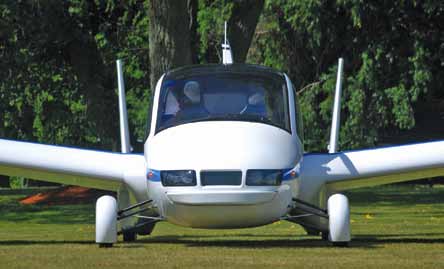Some manufacturers provide landing facility with GPS alone or with an option for ILS (Instrument Landing System) facility. Most business jets use GPS for landing.
Basic flight instruments
Various manufacturers implement different features and philosophies in the cockpit flight management system All of them aim at reducing the pilot’s workload and situational awareness from take-off to landing.
The primary component of glass cockpits is the electronic flight instrument system, which displays all the information about the aircraft’s situation, position and progress. Comprising left- and right-side primary flight displays and multi-function display screens, it primarily covers horizontal and vertical position, but also indicates time and speed. The second part of the glass cockpit, comprising over- and under-centre display screens, shows the aircraft’s system conditions and engine performance.
Majority of the system-related controls (such as electrical, fuel, hydraulics and pressurisation), for example, are usually located in the ceiling on an overhead panel. Radios are controls such as the autopilot, usually placed just below the windscreen and above the main instrument panel on the glareshield.
As aircraft displays have advanced, so have the sensors that feed them.
Traditional gyroscopic flight intruments have been replaced with altitude and heading reference systems and air data computers, improving reliability and reducing cost and maintenance. GPS receivers are integrated into glass cockpits.
EICAS/ECAM warning systems
While on-board computers manage all the systems and take full control of the aircraft flight and propulsion systems, central advisory warning system draws the attention of the crew by flashing lamp in the direct vision of the pilot.
Multi-function display units are used for presentation of the aircraft data. Areas on the screen can be reserved for display of warning messages.

The engine indication and crew alerting system (for Boeing) or electronic centralised aircraft monitor (for Airbus) allow the pilot to monitor the following information: values for N1, N2 and N3, fuel temperature, fuel flow, the electrical system, cockpit or cabin temperature and pressure, control surfaces and so on. The pilot may select display of information by means of button press.
Electronic flight bag
Electronic flight bag is an electronic information management device that helps pilots perform flight management tasks more easily and efficiently with less paper. It is a general-purpose computing platform intended to reduce, or replace, paper-based reference material often found in the pilot’s carry-on flight bag, including the aircraft operating manual, flight crew operating manual and navigational charts (including moving map for air and ground operations).
Electronic fly bag
Airline operators induct aircraft at various stages spread over many years. Configurations of the aircraft also vary as the engine selection for a particular aircraft depends on the customer. Airline operators have a major challenge of managing the maintenance, repair and overhaul (MRO) data for different aircrafts and different subsystems covering all disciplines of engineering.
Now each aircraft is equipped with an electronic fly bag that has all the engneering data for maintenance schedules as well as commercial data like the fuel consumed and passenger occupancy.
e-flight offers a comprehensive approach to data management that will tie the aircraft into an organisation’s ground-based computer networks. The airlines use e-flight to set up information technology infrastructure in order to keep the aircraft in the loop on the ground or in the air.
Others
Other advanced features being included are the weather radar system and free-flight. The weather radar system provides the pilot with a complete view of hazardous weather using artificial intelligence and image processin technologies to automatically detect, characterise and avoid severe weather.
Free-flight is a concept of air-traff management based on satellite navigation and data link communication.
B.S Sastry is retd. project director LCA ex-consultant to IT firms for automative and aerospace divisions & B. Ramana is an aerospace engineer






